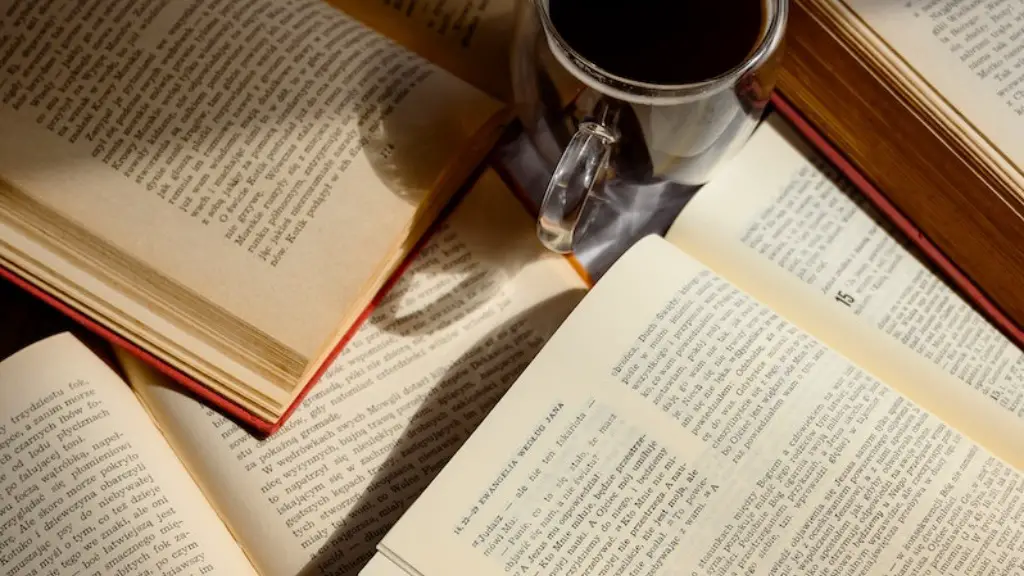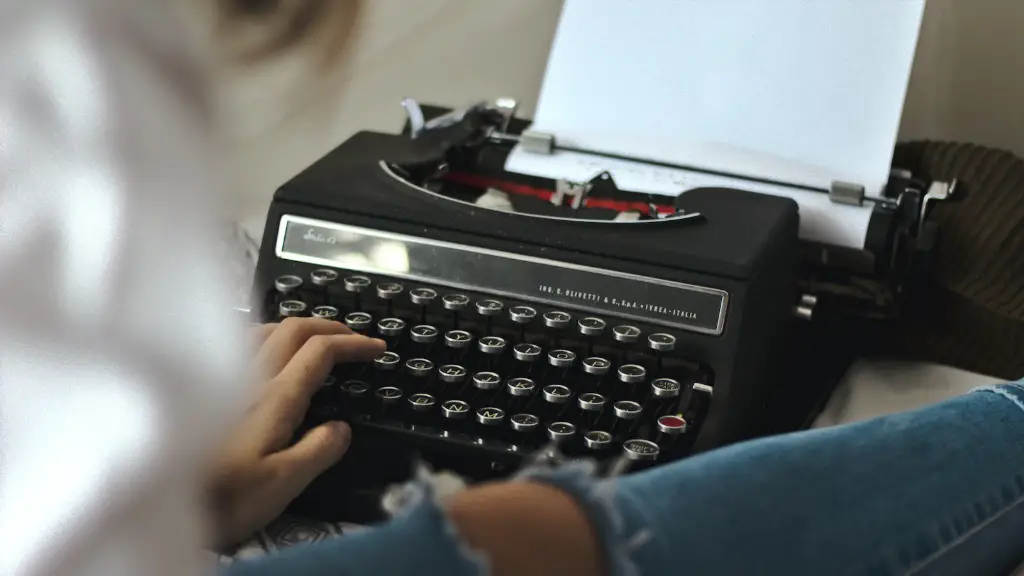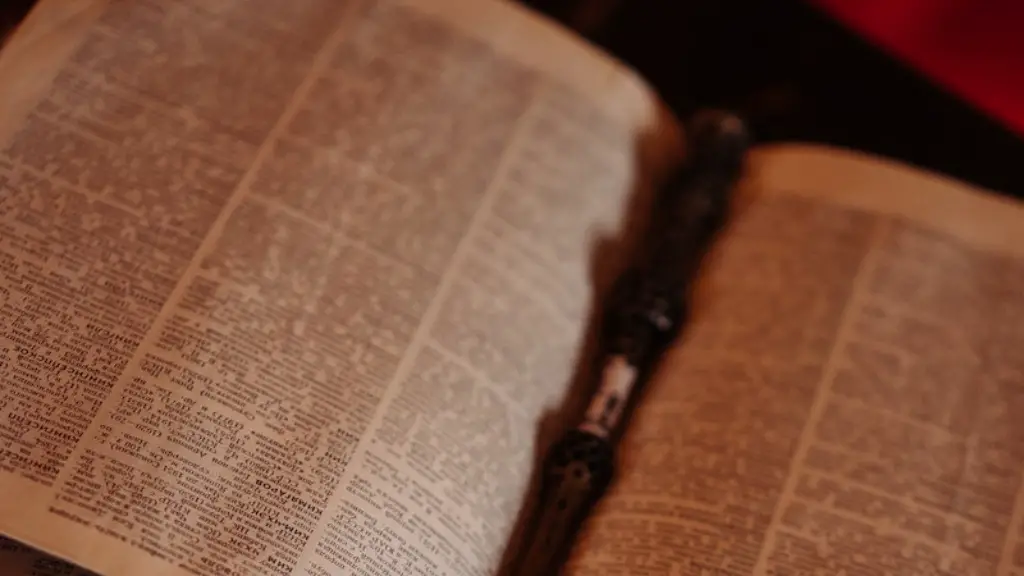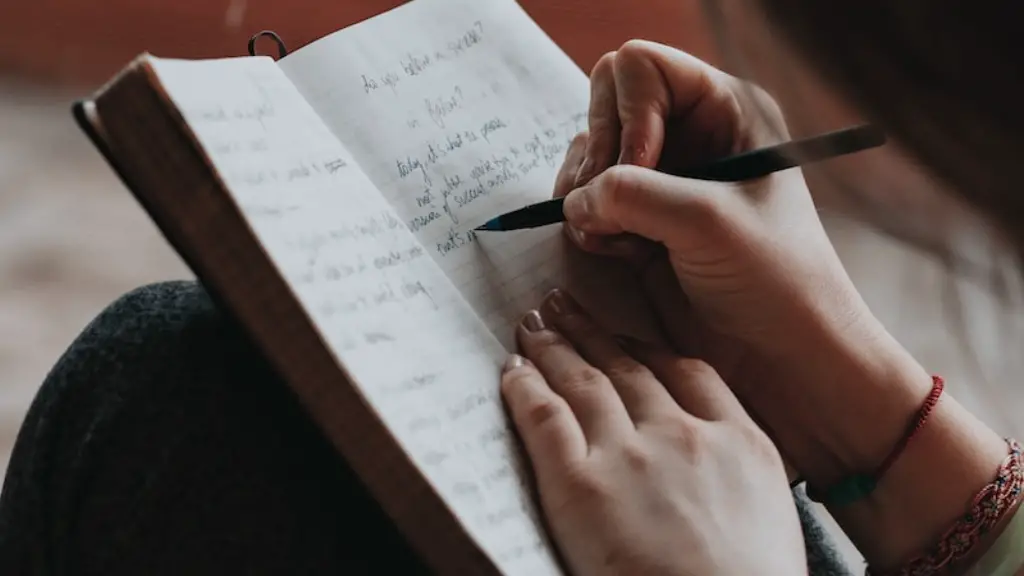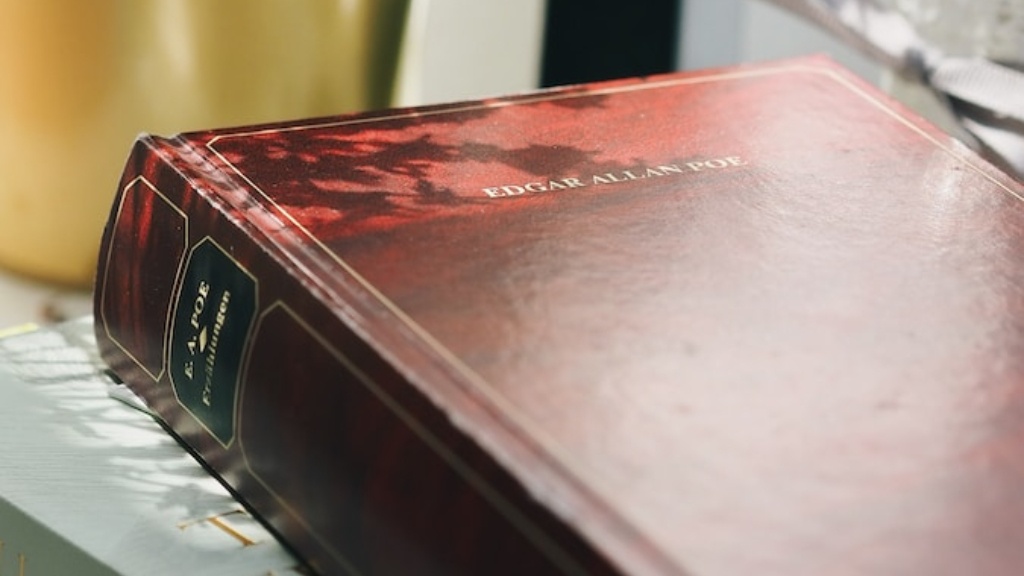Understanding Fixed Poetry
Fixed poetry is a form of verse in which the writer adheres to certain rules, structures and types of language. It is an ancient art form, with extant works dating back several centuries. Despite its relative antiquity and adherence to rules, fixed poem structures still remain popular and relevant today, with poets and readers alike appreciating the complexity of their construction.
The essence of fixed verse lies in the adherence to conventions such as metre and rhyme, which serve to shape the poem’s form. An example of a stanza of fixed poetry might be organised in iambic pentameter, with an AABB rhyme scheme. In this type of poem, each line of the stanza is composed of ten syllables, with every pair of syllables called an iamb: a stressed followed by an unstressed syllable. The stanza is then typically organised into two couplets, which offer a harmonious sound to the two-line grouping. Through this structure and sound, some believe the poet is able to achieve a level of heightened artistry.
Fixed verse also typically has clear and distinct tropes of poetic elements; for example, the traditional use of diction, imagery, and metaphor. Diction describes the poet’s choice of words and their denotations, as well as their connotations. Imagery refers to the poet’s use of descriptive language to conjure vivid mental images. Lastly, metaphor can be used to compare two seemingly unrelated ideas in order to explain one better.
Many of these poetic elements have been used since classical antiquity. In the works of Ancient Greek poets such as Homer and Hesiod, these techniques were used to evoke strong emotions and bring the tales to life, turning narrative stories into songs of the heart. Similarly, fixed poetry today has its own set of characteristics that continue to captivate readers.
The internal structure of the poem can serve to draw attention to the poem’s message. By creating a structure that reinforces the chosen topic in various ways, the poet can make clear their message. Additionally, the form of a fixed poem encourages the poet to be concise, forcing them to focus their message to be both precise and powerful. By using less words each line can increase the poet’s impact when delivering their message.
A unique feature of fixed verse is its musical qualities. In the past, poems were transmitted orally through recital and storytelling, making the use of rhythm, meter and rhyme a key part of the format. In order to make the works easier to remember and memorable as an oral performance, it was necessary to employ a structure that helped these works to stick in the mind.
This inherent musical quality continues to draw readers to fixed poem. Through the use of rhythm and rhyme, a poet can create a work that resonates with readers on an emotional level, and sometimes even in the auditory sense. A poem may also become melodious when the poet uses alliteration and assonance: the repetition of similar or identical sounds.
Postmodern Fixed Poetry
In contemporary poetry, fixed verse has evolved to become more all-inclusive. In particular, modern poets take inspiration from all kinds of different sources to create their works: from traditional forms to postmodern ludic, confrontational and experimental works. Postmodern fixed poetic elements, for example, such as visual formatting, audio and video, can be used to form more innovative works.
Moreover, the definition of fixed verse can be broadened to include not only traditional forms such as the sonnets and haiku, but also less structured works such as emails, texts, and social media posts. By allowing for more freedom within the form, new ways of expression are opened and more creativity is created.
At the same time, the adoption of the mobile phone and digital media has helped to spark renewed interest in fixed verses. With the advent of the digital age, new devices can be used to share poetry through audio-visual performance, with some poets utilizing platforms such as YouTube to upload recordings of their work. Others have even developed apps designed to help poets compose works in a variety of styles, from acrostic and villanelle to rondeau and sonnet.
Of course, traditional pre-internet forms of fixed verse are still commonplace. Responses to themes in journalism, local events and meditation can still be found in numerous newspapers and magazines. Moreover, politicians, teachers and preachers continue to rely on the oratorical capacity of fixed poetry when addressing supporters, pupils or congregations.
Uses of Fixed Poetry
Fixed verse continues to be an effective, if sometimes underappreciated, way to communicate an idea or message. It provides an artistic, creative medium to express feelings, opinions, and beliefs, and in some cases to deliver news. By adhering to a set of conventions or patterns, the poem can take on an additional layer of meaning and impact.
For instance, sonnet poetry is commonly used to express but not limit love. Though other forms of poetry, like free verse, can do the same, fixed poems can convey a broader range of emotion with less risk of being misunderstood. While sonnets may have a timeline of events, a set of metaphors, and a rhyme scheme to contain their story, a free verse will be more abstract. In this way, fixed verse can bring a more palpable emotional punch to the work, with each literary form conveying its own unique message.
Furthermore, fixed poems are often memorable, whether they are chanted or danced, chanted or intoned. This concise and concise format of poem can have a lasting impact and legacy, as seen through the works of renowned poets such as Alexander Pope, William Shakespeare and Emily Dickinson, all of whom employed fixed verse to tremendous effect.
Analysis on Fixed Poetry
Through its adherence to rules, fixed poetry continuously offers something fresh yet familiar. Contentious theorists consider the adherence to conventional forms of the past as constricting the creativity of modern poets. However, it is clear that fixed poem is still a popular and effective form of verse in our present day. Furthermore, with more modern tools such as Postmodern Fixed Poetry being adopted, the art form is ever-changing and vibrant.
There are many reasons for this continued relevance, amongst them the memorability of the form and the way that it can be used to communicate ideas and messages. Additionally, fixed poetry offers more complexity and aesthetic value, owing to the poet’s use of literary devices and poetic elements. In this way, this type of poetry can be incredibly evocative and effective in its delivery.
Fixed poetry also offers a degree of freedom, as poets are able to use sophisticated structures or variations on traditional forms to create works that are meaningful, as well as aesthetically pleasing. It is this versatility, whilst still adhering to the form, combined with a vast array of poetic devices, that makes fixed poetry such an exciting art form and so relevant today.
Impact of Fixed Poetry
Fixed poetry continues to have a cross-cultural impact, with many cultures appreciating the complexities and nuances of the form. It is likely to remain an important part of our literary culture, as many of its successors such as rap, spoken word and hip hop, owe their existence to the form’s influence. Moreover, fixed verse also remains popular amongst modern poets who appreciate the art of constructing something complex from the constraints of a set of rules.
Furthermore, fixed poetry can be seen as an art form that can make a unique contribution to society. It gives readers the opportunity to look into their innermost thoughts, encouraging self-reflection and self-discovery. Additionally, fixed verse has often been used to challenge injustices, providing a platform to comment on societies ills and offering comfort when necessary. Through its long history, it is clear that fixed poetry is still as powerful today as it ever was.
Conclusion
Fixed verse is an ancient and powerful form of expression, with its history stretching back centuries. Yet despite its age, it has remained relevant and popular. Through the use of literary devices, musical elements and structure, the poet is able to communicate powerful ideas and messages to a wider audience. Additionally, the poet is able to engage readers both emotionally and cognitively, often impacting them on a much deeper level. As such, fixed poetry continues to be one of the most evocative and sophisticated forms of verse available to present day poets and readers alike.
